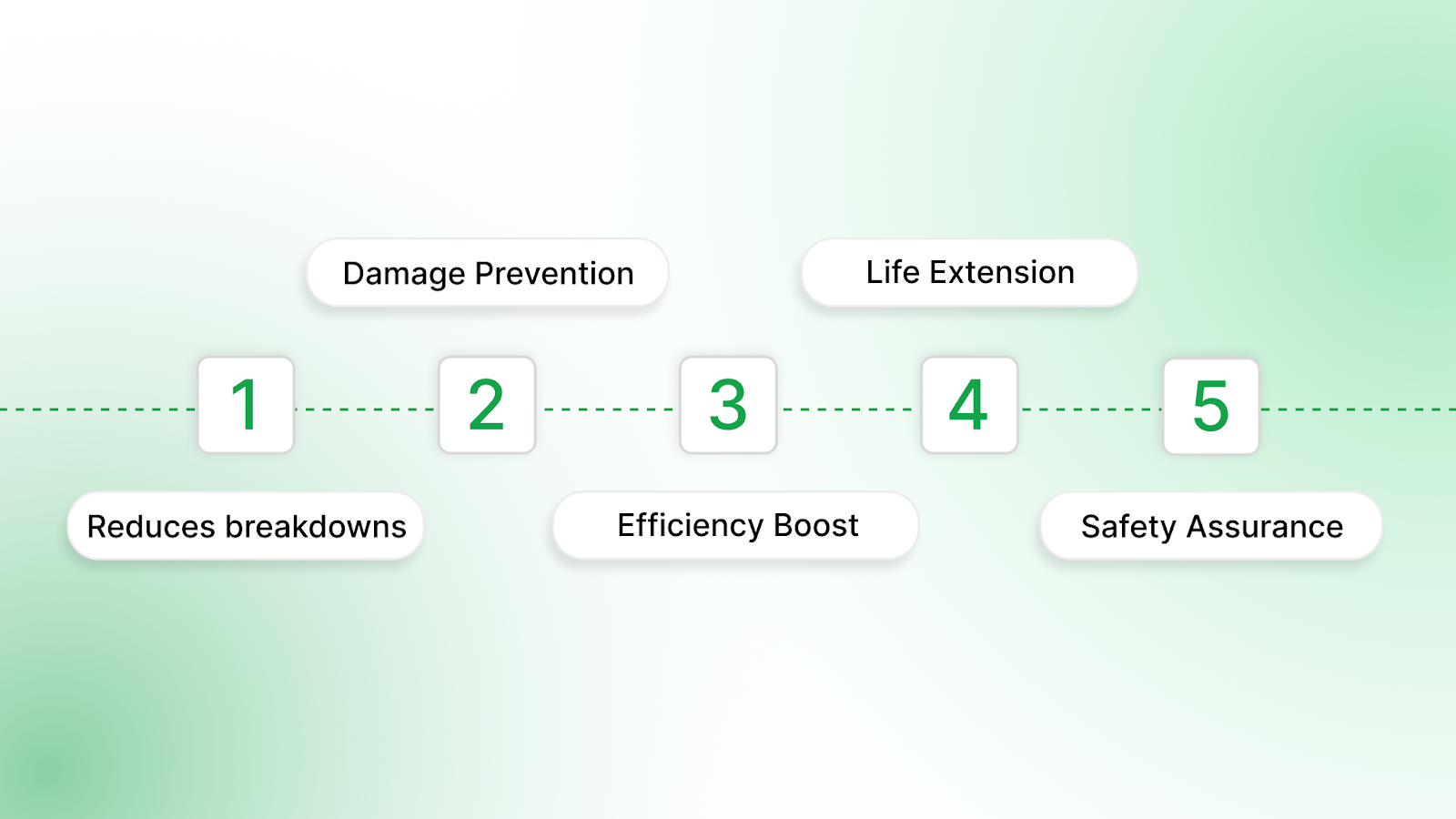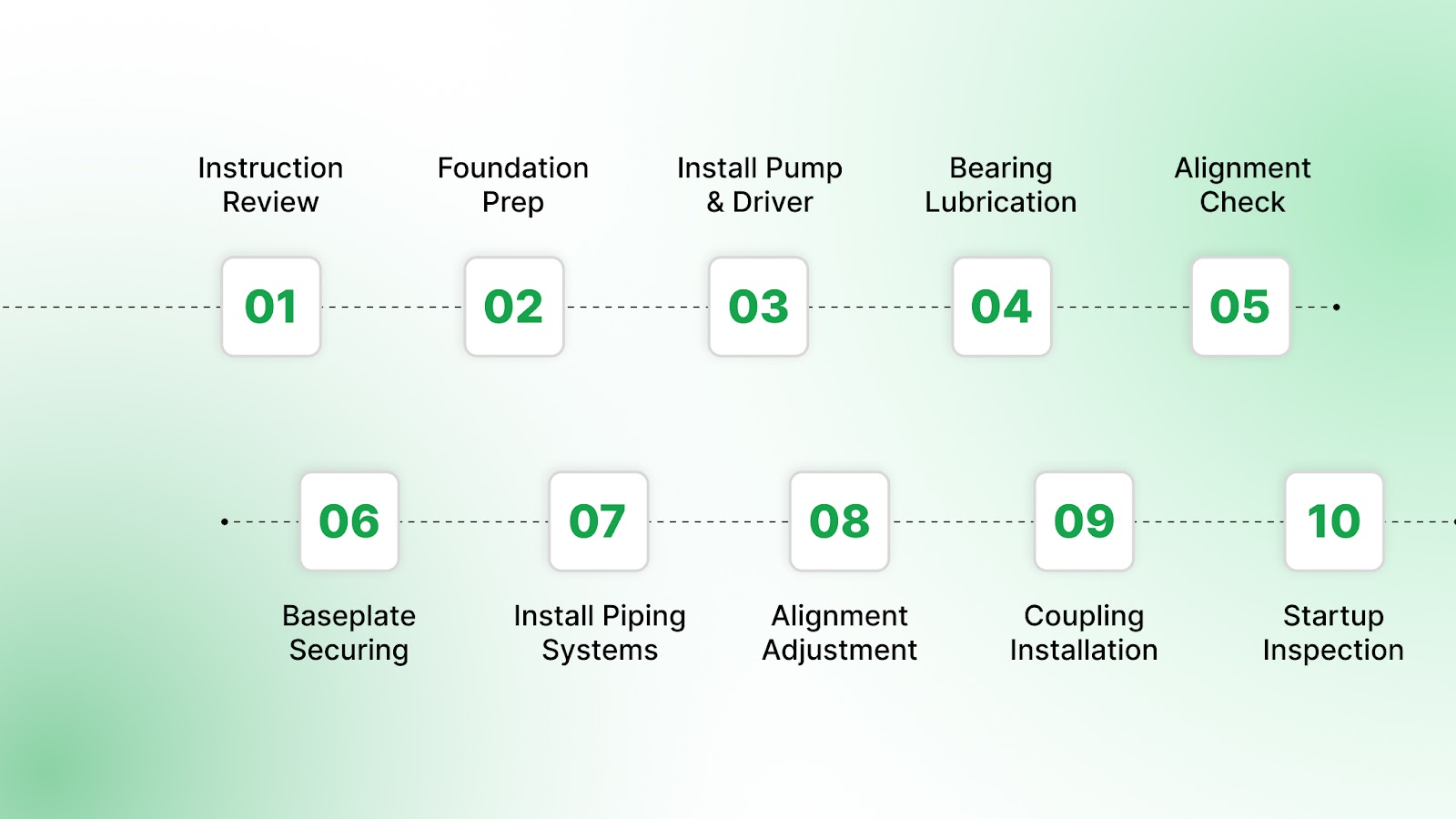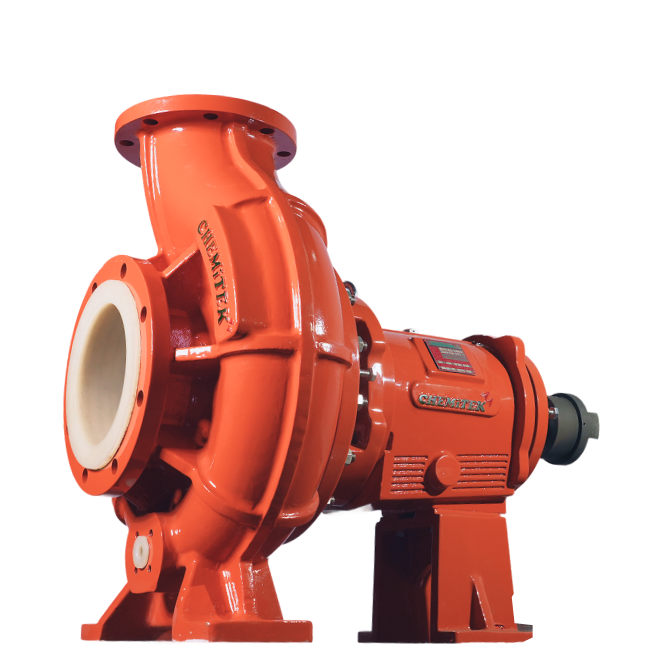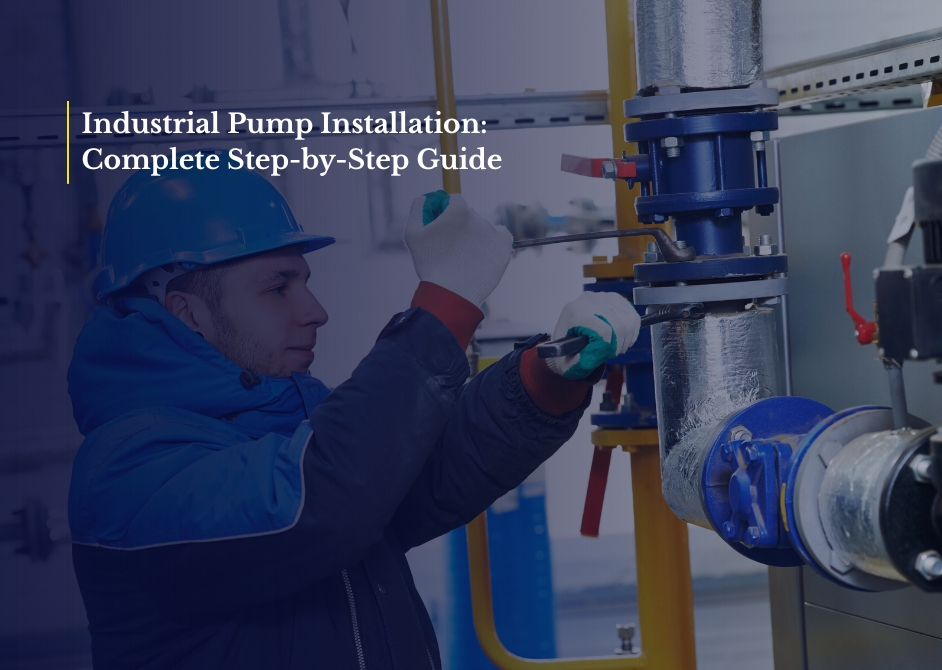Industrial pumps are critical to production in sectors like oil refining, pharmaceuticals, and wastewater management. But even the most advanced pump will underperform or fail early if installed incorrectly. Issues like foundation voids, pipe strain, or misalignment often go unnoticed until they trigger major breakdowns.
That’s why industrial pump installation is a prolonged investment in reliability, efficiency, and safety. Proper installation reduces operating costs, supports energy efficiency, and extends the service life of high-value equipment.
In this guide, we’ll cover 10 essential steps for correct pump installation, ensuring your system runs at peak performance right from day one.
Key Takeaways:
- Industrial pump installation involves precise placement, alignment, and connection of pumps to ensure sustained reliability.
- Correct installation helps prevent vibration, leakage, and energy losses that can damage equipment and increase costs.
- Steps include baseplate leveling, piping checks, shaft alignment, foundation grouting, and operational testing.
- A structured installation checklist improves safety, ensures compliance with API and OEM standards, and reduces post-installation issues.
- Proper installation supports consistent flow rates and stable system performance across different operating conditions.
To understand the installation process, it is important to first examine what industrial pump installation is and why it is essential.
What is Industrial Pump Installation and Why It Matters

Industrial pump installation is the process of setting up a pump so it meets its intended performance, efficiency, and safety standards. It is more than connecting pipes; it involves precise alignment, a stable foundation, and proper system integration.
Importance of correct installation:
- Reduces breakdowns: In oil refining and chemical plants, improper installation leads to unexpected pump failures, causing costly production halts and safety risks.
- Prevents component damage: Mining and slurry handling pumps suffer from seal and bearing damage due to misalignment and unstable foundations, leading to frequent downtime.
- Improves energy efficiency: Water treatment facilities benefit when pumps are installed correctly, maintaining optimal flow rates and reducing power consumption across treatment cycles.
- Extends service life: In industries with abrasive fluids, like mining or wastewater, precise installation minimizes vibration and mechanical wear, extending pump longevity.
- Ensures safety compliance: Following strict installation protocols is critical in chemical processing to prevent leaks and meet environmental and safety regulations.
With this foundation, next explore the essential steps involved in the installation of an industrial pump.
Industrial Pump Installation: Practical Steps

Correct installation of an industrial pump like a centrifugal pump, in horizontal or vertical orientation and metallic or non-metallic construction, is not just about assembling components; it is about creating the right operational foundation to deliver consistent output, minimize interruptions, and protect equipment
Each step below addresses critical mechanical, hydraulic, and operational considerations to ensure the pump delivers its rated performance under actual site conditions.
1. Review Manufacturer's Instructions and Site Preparation
Before any mechanical work begins, the installation must align with the Original Equipment Manufacturer (OEM) recommendations. Each centrifugal pump design may have variations in alignment tolerances, lubrication type, and baseplate requirements.
Key preparations include:
- Study the installation manual for torque specifications, bearing lubrication guidelines, and permissible piping loads.
- Ensure the site is free from construction debris, dust, and obstacles that can interfere with installation accuracy.
- Verify the availability of a stable and appropriately rated electrical power supply or fuel source for motor/engine-driven pumps.
2. Prepare the Foundation and Baseplate
A centrifugal pump’s operational stability heavily depends on its foundation. A poorly prepared base can lead to vibration issues, misalignment, and premature bearing or seal failure.
Guidelines for foundation work:
- Use a rigid concrete foundation with a minimum compressive strength of 3,000 psi (20.7 MPa).
- Ensure the surface is level within ±0.002 inches per foot.
- Position and secure the baseplate using high-strength anchor bolts, keeping it free from dirt, grease, or grout contamination.
3. Install Pump and Driver (Motor or Engine)
Correct mounting of the pump and driver ensures energy is transferred efficiently without imposing undue load on the shaft or bearings.
Specifications to follow:
- Position both units on the baseplate according to OEM dimension drawings.
- Avoid unnecessary shimming unless required for achieving correct alignment.
- Keep shaft rotation direction consistent with the arrow markings on the pump casing.
- Maintain parallelism between pump and driver feet within 0.05 mm.
- Avoid soft foot conditions; check with feeler gauges before final tightening.
4. Lubricate Bearings and Fill Oil
Centrifugal pumps rely on properly lubricated bearings to minimize friction and heat build-up. Incorrect lubrication can cause catastrophic failure within hours of operation.
Lubrication checks:
- Use only OEM-recommended lubricants such as ISO VG 68 or VG 100 oil for process pumps because their viscosity and additive packages optimize bearing protection and reduce wear under operational conditions.
- Fill oil to the marked level in the bearing housings and driver gearbox, if applicable.
- For grease-lubricated bearings, use a calibrated grease gun to prevent over-packing.
Lubrication guidelines:
5. Check and Align Pump and Driver
Misalignment is one of the leading causes of centrifugal pump failure. Proper alignment minimizes seal leakage, shaft bending, and coupling wear.
Alignment procedure:
- Perform initial alignment using a dial indicator or laser alignment system for angular and parallel offset within ±0.05 mm.
- Keep total indicator runout (TIR) within OEM limits, typically ≤0.002 inches for high-speed pumps.
- Record readings for both parallel and angular alignment.
6. Grout the Baseplate and Secure
Grouting is the process of filling the space between the pump baseplate and the concrete foundation with a specially prepared fluid mixture.
In industrial pump installations, grout serves two key purposes: it locks the baseplate firmly in place and ensures full surface contact with the foundation. This eliminates voids that could otherwise lead to resonance, vibration, and misalignment over time.
Grouting steps:
- Use non-shrink epoxy or cementitious grout designed for machinery foundations.
- Pour grout under the baseplate to achieve 100% surface contact.
- Allow the grout to cure for the recommended time (usually 24–72 hours as per the manufacturer) before rechecking alignment.
- Maintain grout temperature between 10°C and 32°C during curing.
7. Install Piping Systems (Suction and Discharge)
Piping must be installed so it does not apply mechanical strain to the pump casing or disturb alignment. Poor piping practices can cause cavitation, excessive vibration, and seal failure.
Guidelines:
- Ensure suction piping is short, straight, and at least the same diameter as the pump inlet (minimum 5–10 pipe diameters).
- Install supports and expansion joints to isolate the pump from thermal and mechanical loads.
- Include a check valve and isolation valve on the discharge line to protect the pump during shutdowns.
- Use flexible expansion joints near the pump to absorb thermal growth.
- Install eccentric reducers with flat side up on suction to avoid air pockets.
8. Final Alignment Check and Adjustments
Once piping is in place, alignment must be rechecked because piping weight or thermal expansion can alter shaft positioning.
Adjustment focus:
- Verify alignment using precision tools.
- Re-adjust shims or driver position as needed to return within tolerances.
- Document alignment data for future maintenance reference.
Alignment tolerances for centrifugal pumps:
9. Install Coupling and Ancillary Equipment
The coupling transfers power from the driver to the pump shaft, so installation accuracy directly impacts operational smoothness.
Installation notes:
- Fit the coupling halves to the pump and driver shafts per OEM specifications.
- Install shaft guards to meet safety regulations (OSHA/ISO).
- Set up monitoring equipment like vibration sensors, temperature probes, and seal flush systems.
10. Pre-Startup Inspection and Initial Run
Before commissioning, a systematic pre-startup inspection ensures no critical detail has been missed.
Checklist before starting centrifugal pump:
- Confirm lubrication levels, coupling guards, and alignment accuracy.
- Ensure all valves are in correct positions and strainers are clean.
- Start the pump gradually, monitoring parameters such as pressure, temperature, and vibration levels.
- Check rotation direction of the driver motor.
- Open all suction valves and set the discharge valve to 25–50% open.
- Monitor vibration (< 4.5 mm/s) and bearing temperature (< 80°C) during the first run.
Now that the steps are clear, it’s important to explore the key practices and challenges to ensure proper industrial pump installation.
Key Practices and Challenges in Industrial Pump Installation
Installing an industrial pump correctly is as critical as maintaining it. Even the most reliable pump can fail prematurely if the installation process is rushed, misaligned, or done without adherence to standards.
Below is a breakdown of common challenges during pump installation, along with best practices to address them effectively.
1. Inadequate Foundation Preparation
Weak or uneven foundations can cause vibration, alignment drift, and bearing failure within months of operation.
Best Practice: Follow API 610 and Hydraulic Institute guidelines for foundation design. Ensure the baseplate is mounted on a reinforced concrete foundation with a flatness tolerance of ±0.125 mm/m and properly grouted to prevent movement.
2. Misalignment During Installation
Even minor shaft misalignment during installation increases wear on couplings, seals, and bearings.
Best Practice: Perform precision alignment using laser alignment tools and verify soft-foot conditions before coupling the pump and driver. Ensure alignment meets API 610 or ANSI/ASME B73.1 tolerances.
3. Improper Piping Support
Unsupported or misaligned piping puts strain on pump flanges, causing distortion and internal wear.
Best Practice: Install piping so it naturally lines up with pump nozzles without forcing connections. Use independent pipe supports and allow for thermal expansion in accordance with ANSI-compliant configuration standards.
4. Ignoring Cleanliness During Assembly
Foreign particles like welding slag, rust, or dirt entering the pump during installation can cause immediate damage to mechanical seals and impellers.
Best Practice: Flush and clean all suction and discharge piping before connecting to the pump. Follow ASTM D6439 cleaning practices for piping systems.
5. Incorrect Anchor Bolt Tension
Loose or overtightened anchor bolts can distort the pump casing and cause misalignment during operation.
Best Practice: Torque anchor bolts to OEM specifications using a calibrated torque wrench, checking again after initial operation to ensure no settling has occurred.
6. Neglecting Pre-Startup Checks
Skipping essential pre-startup steps increases the risk of running the pump under unsafe conditions.
Best Practice: Conduct a complete pre-startup checklist, including checking lubrication levels, verifying rotation direction, inspecting couplings, and ensuring that all guards are in place as per OSHA and API guidelines.
7. Using Incorrect Seals or Gaskets
Installing seals or gaskets not rated for the fluid or temperature can lead to premature leakage and downtime.
Best Practice: Select seals and gaskets that meet the chemical compatibility and pressure-temperature requirements specified in API 682 or OEM documentation.
8. Lack of Skilled Supervision
Untrained personnel may overlook critical tolerances, alignment steps, or safety protocols during installation.
Best Practice: Assign experienced supervisors who are trained on OEM-specific installation manuals and industry best practices. Conduct toolbox talks before starting the installation process and also check that pumps are made of high-grade components.
9. Inadequate Motor and Pump Coupling Guarding
Poor or missing guarding during installation exposes workers to moving parts, increasing safety risks.
Best Practice: Install ANSI B11.19-compliant coupling guards before commissioning the pump, ensuring that they allow easy access for inspection while meeting safety requirements.
Is proper installation slowing down your project timeline? See how Chemitek can streamline industrial pump installation with precision tools, trained teams, and adherence to global standards. Explore here.
Chemitek: Reliable Installation Solutions for Industrial Pumps
At Chemitek Process Equipment Pvt. Ltd., we follow proven methods for industrial pump installation to ensure pumps run efficiently from day one, supporting long-term performance, reduced maintenance, and process stability.
From baseplate leveling and shaft alignment to secure piping, our process prevents vibration, leakage, and premature wear while meeting manufacturer and API standards.
For processes involving chemicals, slurry, or clean water, we handle every step from foundation preparation to operational testing with precision, ensuring safe, efficient, and trouble-free operation.
Talk to us today to choose the right pump and installation plan for your needs.
FAQs
1. What is the most important step in industrial pump installation?
Accurate baseplate leveling and shaft alignment are critical. These steps prevent stress on bearings, seals, and couplings, reducing the risk of vibration and early failure.
2. Why is alignment so important during installation?
Misalignment increases wear on seals and bearings, causes excessive vibration, and reduces pump efficiency. Laser alignment ensures precise coupling between the pump and motor.
3. How do you prepare a pump foundation?
A pump foundation should be clean, level, and strong enough to handle operational loads. Grouting helps secure the baseplate and reduces vibration during operation.
4. What checks should be done before starting the pump for the first time?
Inspect all piping connections, verify lubrication levels, check coupling alignment, confirm motor rotation direction, and ensure there are no obstructions in the suction line.
5. Can improper installation affect energy efficiency?
Yes. Incorrect alignment, poor piping layout, or unstable foundations can cause pumps to consume more energy and deliver lower output. Proper installation optimizes both performance and energy use.

Latest posts
Ready to Upgrade Your Process Operations?
